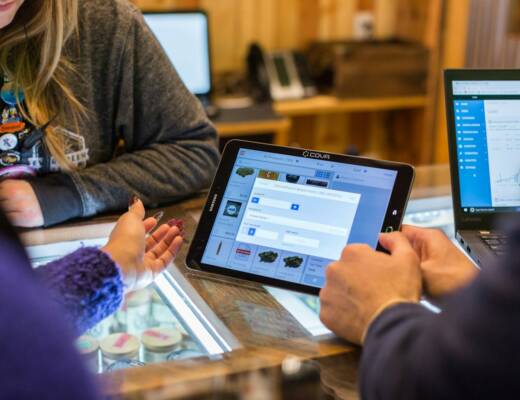Going out on your own, and setting up your own company is a daunting but exciting prospect. You will need to be prepared to work long hours to achieve initial success and growth, but the rewards are endless. On top of all your concerns starting up, you will want a reliable IT system in place that will support you as you go forward in business.
It is easy to get overwhelmed by IT and all the technical terms surrounding it, but the important thing to remember is that IT is partly responsible for the startup explosion of which you are apart of and it’s happening all over the world.
Here are 5 questions to ask yourself, when tackling your IT infrastructure.
1. Have you secured your online identity?
Either you’ve thought long and hard about the name of your company or it came in a flash of genius. Alternatively, perhaps it was destined from a very young age, and there is a grand epic story behind it all. Either way it is something that you’re proud of and stands as an important milestone in the genesis of your business and you as a person, as it should do.
The next step is getting your domain name established, this will be the root of your web presence and the name your customers will associate with you online. Checking whether there is a domain name that allows you to use your preferred name with a .com or .co.uk suffix. If it is free, you should register right away. If it has already been taken by somebody else then it may require some tinkering or the addition of other words and phrases. Similarly, you will have to check whether your name can be freely used via social networking feeds.
2. What software will you be using?
Make a list of all the software you foresee yourself using. Work out the absolute minimal and then go on from there. Most software may be off the shelf, requiring licensing, one off payment or a monthly subscription. Some software may even be free or have a free alternative. Google Docs for example offers a free alternative to the established Microsoft Office suite and it does much of the same things admittedly within a more limited package, but functions are being added by Google all the time and it is great for social collaboration between staff.
Cloud based software is becoming more popular with small business since rather than requiring a large one off payment, usage of cloud based software will more than likely require a smaller monthly fee. Connection and installation is easy, though you do have to ensure that you have an internet connection when using it. A lot of the established business related software packages, like Sage and Office now have cloud based iterations. The advantages are that you can opt in and out on a per month basis depending on your workload or indeed the availability of your workforce. As with hardware, utilising the cloud is lessening your capital expenditure against your operating expenditures, which is often far more cost effective.
Some more specialised software isn’t yet available via the cloud, this includes CAD software (computer aided design software) which has demanding technical specifications. Alternatively, your business operates in a specialized vein or has a particular practice that requires bespoke software, which may require assistance from an agency.
3. What are your hardware requirements?
In terms of cost, setting up your hardware can initially seem expensive. It doesn’t need to be however. As with software it is best to make a list of the minimum resources you will need. Many decisions will be determined by where you operate. Do you for example have a static office as a base of operations, or do you and your staff work remotely? Other considerations such as hardware performance can be reduced thanks to cloud based solutions where you access hardware remotely.
You will first have to begin by addressing your server, will you have a physical unit onsite or can you utilise the cloud to store all your files? Should you be based in an office a physical server may be beneficial, but if your workforce is spread out and works remotely, a single server may be unnecessary and the cloud more suitable. Having a physical unit can reduce lag during usage, but if your internet connection goes down you won’t have access to cloud based solutions.
In terms of workstations, you have a number of different options, do you purchase PCs or laptops for yourself and staff? Do you use your own assets and allow your staff to bring their own devices to work? PCs are usually cheaper, more reliable and are capable of processing power making them more effective at the job at hand. Laptops can sometimes be more flexible and are portable. Allowing your staff to use their own devices can sidestep a lot of the financial obstacles, but you will have to enforce a BYOD policy to ensure that company specific data and information are safe on your staff’s machines.
Mobile devices are also on the rise and are only going to become more dominant in business operations. It is likely that your staff already own a smartphone, and can therefore be integrated with emails, and other work related apps. Tablets are useful customer facing tools, especially if you are displaying something online and then forwarding it to the attention of your clients in a face to face meeting.
4. How secure is your data and information infrastructure?
Protecting your system and making sure that it is secure against hackers, viruses and unforeseen circumstances is necessary when building any IT system. This can be harder to control if you employ BYOD policies or have a number of staff working remotely. For defense against viruses you will need antivirus software especially if you are working with PCs. Software can be purchased off the shelf, but there are a number of free alternatives such as AVG Antivirus. Macs tend to be more resistant to viruses on the other hand but that doesn’t mean that its immune to hacking and unwanted intruders.
To maintain security, you will need to keep passwords private and changed regularly, preferably including alphanumeric characters. You staff will also need to be kept up to date about correct security protocol. The best defence lies in the user behind the keyboard. Once again, you can now choose whether security is maintained in house or taken care of via the cloud
5. Do you understand backups, disaster recovery and business continuity planning?
On top of security, you want to ensure that all of your internal files are protected and backed up in the event of the worst case scenario. Clients and customers may be understanding if your system fails in some way due to unforeseen circumstances, like flooding or power outage, but they will be less understanding if this begins to significantly delay business continuity. You always have to spend time implementing a disaster recovery and business continuity plan both as a way of assuring customers they will be protected should the worst happen or indeed if things do go wrong. Once again, the cloud has led to the provision of many comprehensive solutions, with companies offering disaster recovery as a service.
These steps are all you need to consider when approaching your IT system for the first time. The important thing is to keep things simple and realistic, computing can go a long way for a relatively small cost.
This post was contributed to Under 30 CEO by Akita, London IT support providers. To make it easier, we’ve created a startup guide that includes everything you could possibly want to know about putting together an IT system that will help you flourish.




